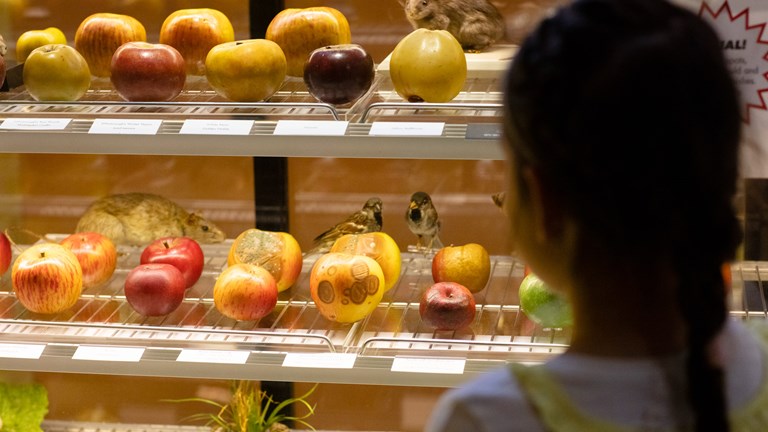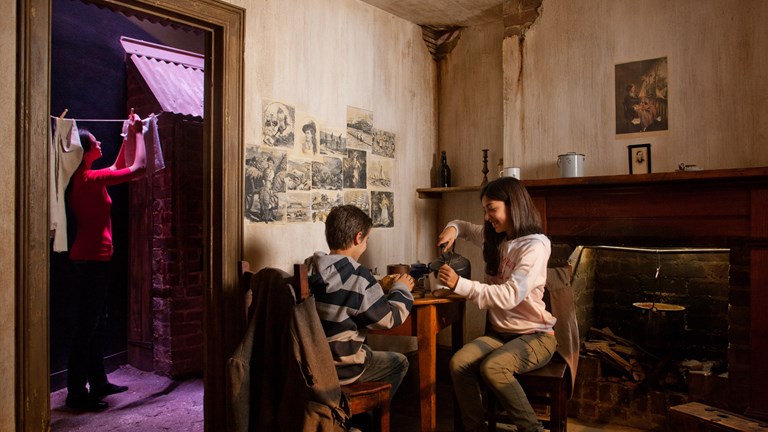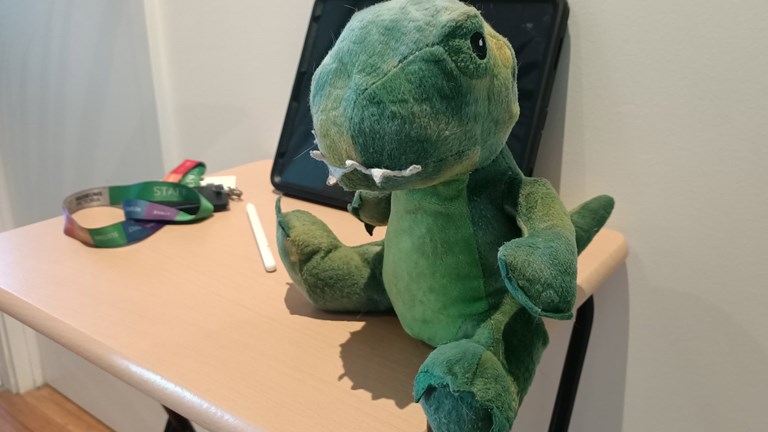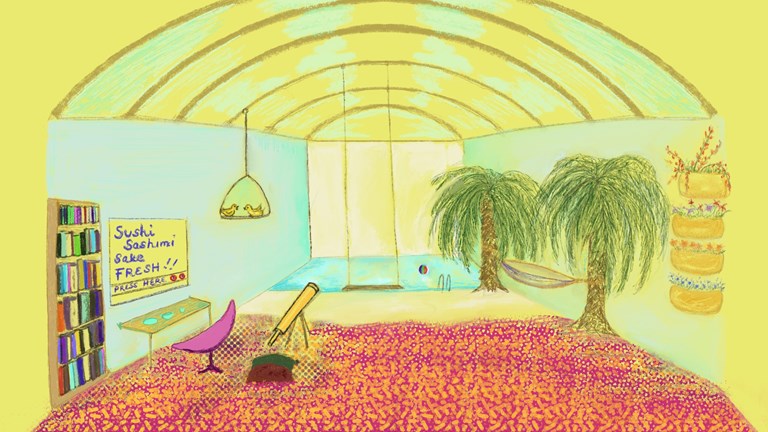
1. Who’s visiting?
Suitable for Year Levels 3–10
Finally, to help you get your exhibitions together listen to Zoe and Emily talking about the different stages of making an exhibition from the excitement of brainstorming and getting the right team together, to the design development stage, to the build and then the final opening. Listen carefully and identify what they say about the following stages:
Do you have a question? Our Ask Us team can help connect your questions to museum experts.
In weeks 1 and 2, you collected and researched a story. This week, you’ll create your exhibit to share that story with others.
Exhibits come in all shapes and sizes, but yours should contain:
An exhibit is a group of things put together to communicate one idea or story. An exhibition is a group of exhibits put together to communicate an even bigger idea or story. Exhibits and exhibitions are both experiences: things that people see, do and feel in space and time.
So, the Museum of Staying Home virtual exhibition is going to contain a bunch of exhibits. Each exhibit will communicate a story by itself, but together, they’ll make a whole exhibition that communicates a bigger story about young people’s experience of staying home.
This virtual exhibition will be 2D (on a screen), but you’ll make your exhibit as a 3D experience, and we’re going to look at lots of 3D exhibits and exhibitions for inspiration.

Suitable for Year Levels 3–10

Suitable for Year Levels 3–10

Suitable for Year Levels 3–10

Suitable for Year Levels 3–10

Suitable for Year Levels 3–10

View some examples of exhibits that people have made at home
We are making improvements to our website and would love to hear from you about your experience. Our survey takes around 10 minutes and you can enter the draw to win a $100 gift voucher at our online store!
Museums Victoria acknowledges the Wurundjeri Woi Wurrung and Boon Wurrung Bunurong peoples of the eastern Kulin Nations where we work, and First Peoples across Victoria and Australia.
First Peoples are advised that this site may contain voices, images, and names of people now passed and content of cultural significance.